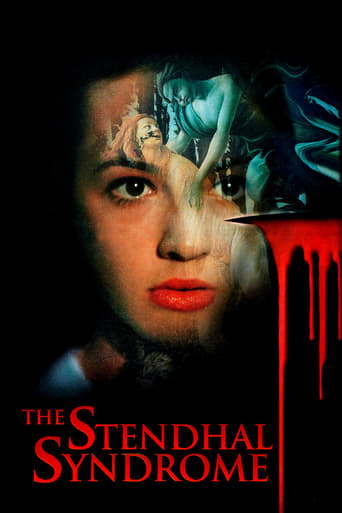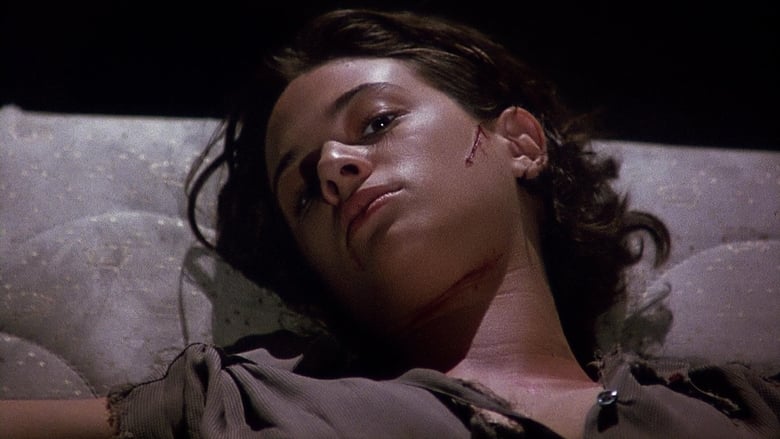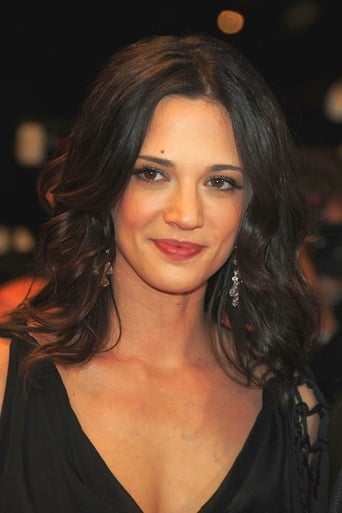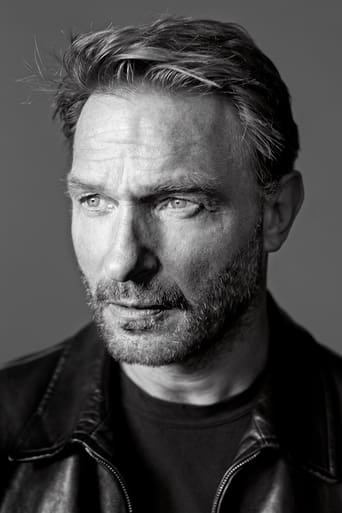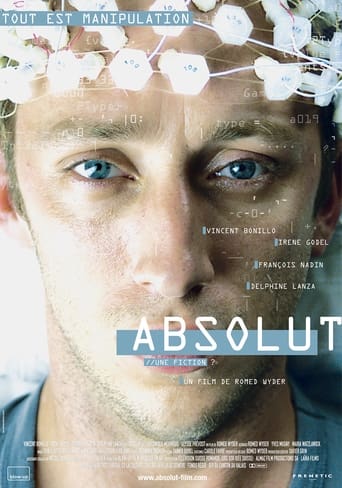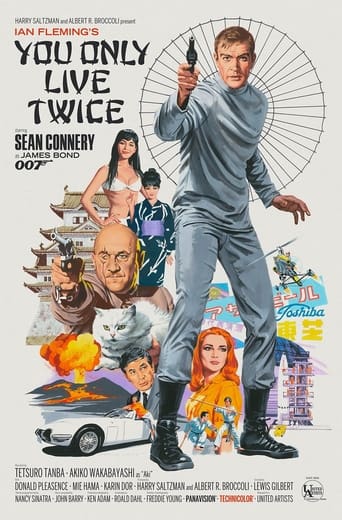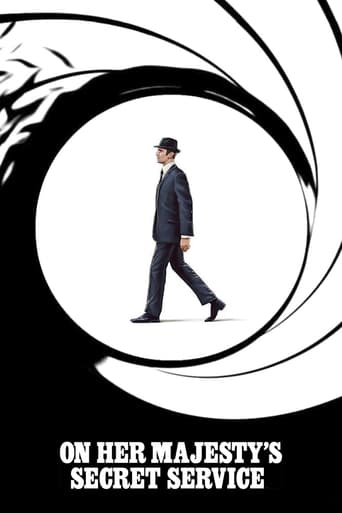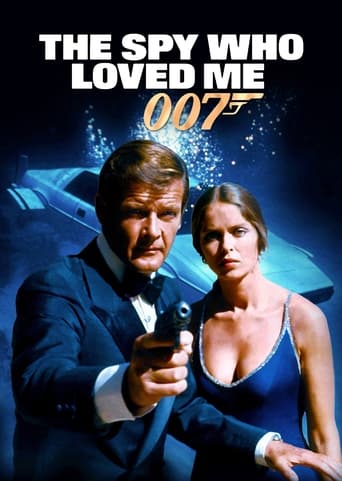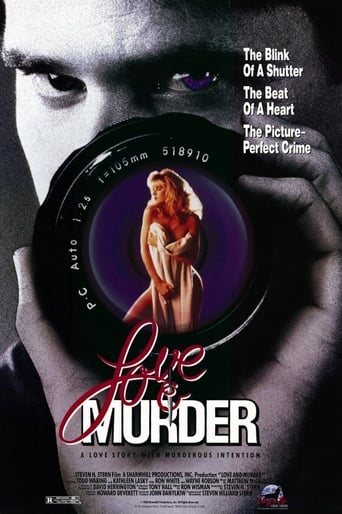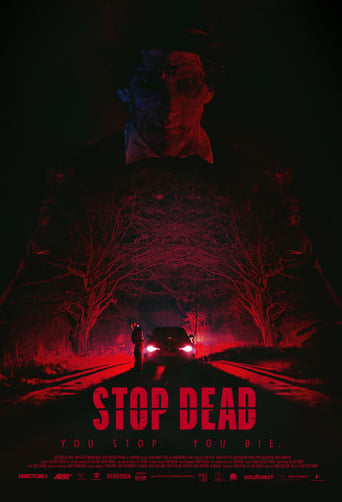The Stendhal Syndrome (1996)
A young policewoman slowly goes insane while tracking down an elusive serial rapist/killer through Italy when she herself becomes a victim of the brutal man's obsession.
Watch Trailer
Cast
Similar titles
Reviews
Waste of time
i must have seen a different film!!
I am only giving this movie a 1 for the great cast, though I can't imagine what any of them were thinking. This movie was horrible
I wanted to like it more than I actually did... But much of the humor totally escaped me and I walked out only mildly impressed.
It starts with a splendid scene in the Uffizi Gallery in Florence and then goes downhill from there and unfortunately it takes two hours to get to the end. It had Argento elements (strong visuals, unusual narrative direction) and his daughter Asia playing the main role but I found some of it....well boring which I've never said before about watching a Dario Argento movie. It is in effect two films, one about a serial killer then another one about a serial killer. Thomas Kretschmann did his best as one killer who is revealed early on in the film but I found him a trifle laughable. The last twist in the plot brought a ho- hum from me. It was patently obvious what it would be.The best parts are the music score by the legendary Ennio Morricone and the cinematography by the equally legendary Giuseppe Rotunno. And also the great paintings that were shown. I would have been happy just looking at them.
This is definitely Dario Argento's sickest movie yet, and definitely most depraved, but to be honest I just didn't feel this movie at all and not in my opinion one of Dario Argento's finest moments and further proved that he started losing his creative touch after the 1980's and what was he thinking casting his own daughter in this role. I'm not saying that Asia Argento was bad or anything in fact she played the role really well, it's just the fact that the things that happen to her in this, like getting graphically raped was unsettling and way too stylized in my opinion.The first half of the movie was okay, and we get some of Argento's classic touches with a plot cantering around a serial rapist/killer, and the main female character drifting off into a fantasy world when she sees paintings, which were beautifully shot, but then falls completely apart in the second half where it just failed to hold my interest once the killer was gone, and thrown in a completely unbelievable stupid twist ending that I saw coming a mile off.Asia Argento as I said before plays her role strongly and carry the entire film really well and Thomas Kretschmann (Alfredo) is chilling as the handsome-looking psycho, and really unsettling at the same time.All in all this just wasn't my cup of tea.
Dario Argent is one of the finest directors of horror worldwide and has many fine films under his belt. Unfortunately The Stendhal Syndrome is not one of them. The 90's are seen as a weak era for Argento, personally I have only seen this and The Phantom of the Opera from this time, and I actually enjoyed the widely lambasted Phantom. Phantom, although far from perfect, was still an enjoyable movie with plenty of whacked out Argento touches. The Stendhal Syndrome, starring Dario's daughter Asia, has a promising story that ultimately goes nowhere, and with horrible CGI effects and slow pacing the movie fizzles out into nothing.The story centres on Detective Anna Manni (Argento) who is tracking down an elusive serial killer/rapist in Florence. To Anna's disadvantage she suffers from Stendhal's syndrome in which she gets bouts of dizziness and hallucinations when she is exposed to the sight of paintings and artistic masterpieces. The killer begins to target Anna, using her illness to his advantage.Argento creates an unsettling atmosphere throughout, this is definitely one of his darkest movies. Camera-work has always been one of Argento's strongest points, and this movie is no different. There are some fantastic shots here, the streets of Florence are dark and menacing, and there is a excellent sequence where a victim is stalked through a room of marble statues. Ennio Morricone's score is perfect, creating a suitably unsettling atmosphere.But these cannot save the movie from being generally uneven. The structure of the story is it's weakest point, with 2/3 of the movie dedicated to the serial killer and the last 1/3 to Anna. There are many points where nothing really happens in a movie that is character-driven. This, and shocking CGI in certain scenes where it really wasn't needed detract from what could have been really good.2/5
First released in 1996 and re-released two years ago, Dario Argento's "The Stendhal Syndrome" has found a niche in Italian official film festivals and as an art-house attraction. This movie, billed as a horror/psycho-thriller, borders on high-kitsch porn and exploitation. But upon closer look, it reveals itself as the work of a director having fun exploring his ideas of what pop entertainment should be like.For all this movie's psychoanalytical posturing and the torments it inflicts on the heroine, its darkest moments have a put-on quality that Argento hides behind an intriguing story, flurries of exciting images and scenes of sexual aggression that are painful to look at –- at the same time erotic and revolting. Nearly lost in the drama is the fact that the victim, police detective Anna Manni, is played by Argento's daughter, Asia. She is a perfect foil for him and his willing accomplice.The syndrome of the title is a phenomenon brought on by hypnotic works of art, where the viewer suffers vertigo, hallucinations and confusion that can lead to memory loss and obsessions. Italian psychiatrist Dr. Graziella Magherini describes the psychosis in her book "La Sindrome di Stendhal," Stendhal being the French novelist who had a similar experience.It's an indication of the respect Argento gets in Italy that the Uffizi art gallery in Florence, which is busy any day, allowed him to film the opening sequences there, even allowing him to linger on Sandro Botticelli's work "The Birth of Venus." However, Argento uses the syndrome merely as a convenient jumping board for the plot and an excuse for his shock-and-go style of filmmaking. The idea is to shock with a perfectly set-up scene and then go on to the next set of visual treats and jolts. Twenty minutes into the movie, the Stendhal angle practically disappears, relegated to some dark corner of the plot.The swirling surfaces of paintings that occasionally engulf Anna are not really the life- altering events in her life. The blame goes to serial killer-rapist Alfredo, who abducts her and makes her his 13th victim but lets her escape, only to resurface later to repeat the nightmare. Thomas Kretschmann plays the blonde psycho in the elaborately staged rape session with over-the-top brutality that's at the same time realistic and faked, teasing the audience into a state of revulsion, disbelief and cheap thrill. Is this for real?Of course it can't be for real because realism is as alien to Argento's style as pineapple is to pizza (a no-no in Italy). Notice the setting of the first rape -- it's more like a porn movie set than a killer's lair. And poor Anna looks less of a victim of a heinous crime than a sacrificial virgin bound on an altar complete with flickering candles. The second rape scene is quicker, coming at a point where Anna is losing her grip on reality, while her obsession to catch the killer and exact revenge is being thwarted by her vague erotic longing for Alfredo.Asia is her father's perfect marionette. Anna goes through several comebacks and transformations and Asia gamely goes through them all. She metamorphoses from a brunette Venus with flowing tresses to a blonde, androgynous gamin. She is assigned a number of unlikely roles: as an investigator of rape cases, a tourist who's losing her memory, a girl at odds with her father, an action painter, a print art collector, a rape victim who finds love again and finally as an avenging angel.Even when Anna is supposed to be losing it, Asia isn't, being always in command and never losing the innocence on her smooth-as-porcelain face. She can display Anna's emotional scars or hide them on cue. Like most of the cast, the quality of her acting is mostly audition- level. Yet, for the cathartic ending, she rises to an entirely different plane, up there in Italy's undiscovered chamber of grade A actors. Argento reconfigures reality through his use of décor, images and music. Anna's multiple tasks are matched by the implausible shifts in her flat's décor, where the walls can be plastered with her bizarre paintings one moment and then reproductions of classic works the next. From the same walls can appear in a wink her stalker or scenes from her past. Blood, meanwhile, is purely a studio prop, dropping and flowing too copiously, and defying nature's course as it cakes too soon. In a hallucination attack, Anna plunges into the water where a monster dolphin with a ghastly human face is waiting to kiss her. That 10-second image sticks in the mind.Argento also consciously gives his moments of suspense a superficial quality. Ennio Morricone's taut score is a one-beat, one-tone affair, a takeoff of the tick-tock rhythm, layered with the wailing of the siren and the warbling of a woman. That would have been just right in the 1960s but a cliché in the '90s.Critics have dismissed Argento's style as unworthy of Hitchcock, with good reason. By the 15th minute of the movie, there is no question of who the killer is. But then the director springs a surprise that's worthy of Hitchcock. In its last nine minutes, the film hits new gear as Anna, sensing that Alfredo is still stalking her, continues to fear for her life while her mind continues to withdraw from reality. Her kindly psychiatrist Dr. Cavanna (Paolo Bonacelli) comes to her timely rescue. Here, the story takes a new turn, hitting an impasse that offers a few escape routes, inviting questions with different answers and speculations with conflicting angles.Everything happens all at once and too suddenly. It's too late for us to think and reflect. The rug has been pulled out from under our feet. Hey presto, the master showman of kitsch has done it again.
